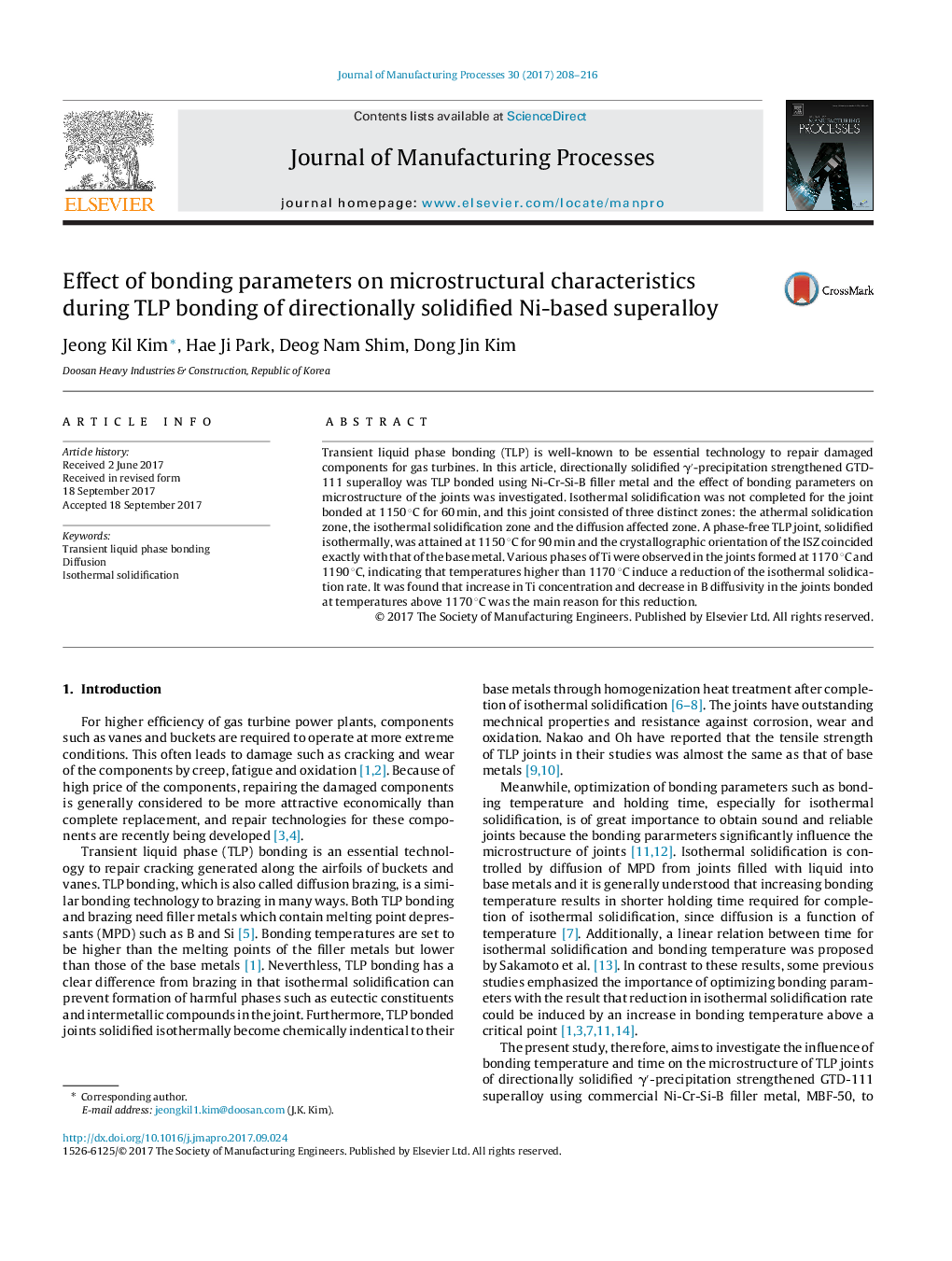| Article ID | Journal | Published Year | Pages | File Type |
|---|---|---|---|---|
| 5469215 | Journal of Manufacturing Processes | 2017 | 9 Pages |
Abstract
Transient liquid phase bonding (TLP) is well-known to be essential technology to repair damaged components for gas turbines. In this article, directionally solidified γâ²-precipitation strengthened GTD-111 superalloy was TLP bonded using Ni-Cr-Si-B filler metal and the effect of bonding parameters on microstructure of the joints was investigated. Isothermal solidification was not completed for the joint bonded at 1150 °C for 60 min, and this joint consisted of three distinct zones: the athermal solidication zone, the isothermal solidification zone and the diffusion affected zone. A phase-free TLP joint, solidified isothermally, was attained at 1150 °C for 90 min and the crystallographic orientation of the ISZ coincided exactly with that of the base metal. Various phases of Ti were observed in the joints formed at 1170 °C and 1190 °C, indicating that temperatures higher than 1170 °C induce a reduction of the isothermal solidication rate. It was found that increase in Ti concentration and decrease in B diffusivity in the joints bonded at temperatures above 1170 °C was the main reason for this reduction.
Related Topics
Physical Sciences and Engineering
Engineering
Industrial and Manufacturing Engineering
Authors
Jeong Kil Kim, Hae Ji Park, Deog Nam Shim, Dong Jin Kim,
